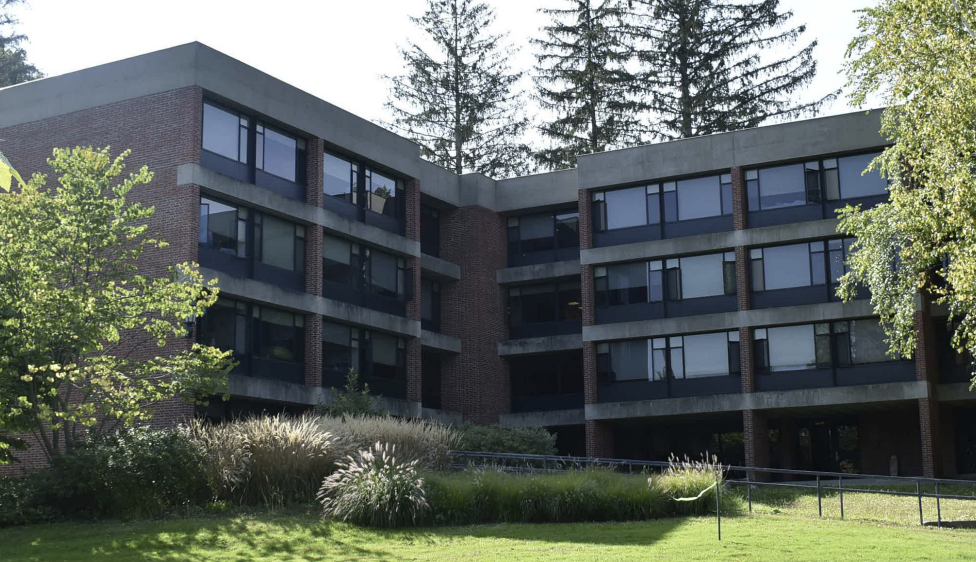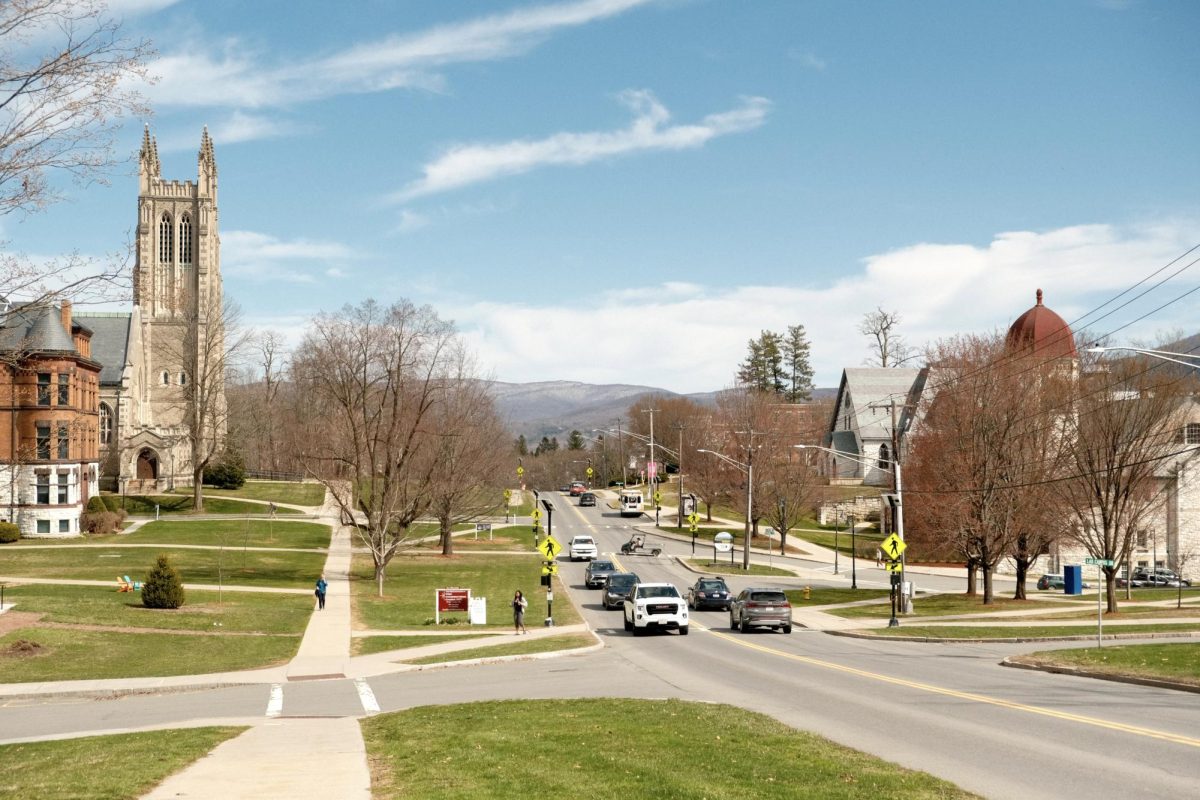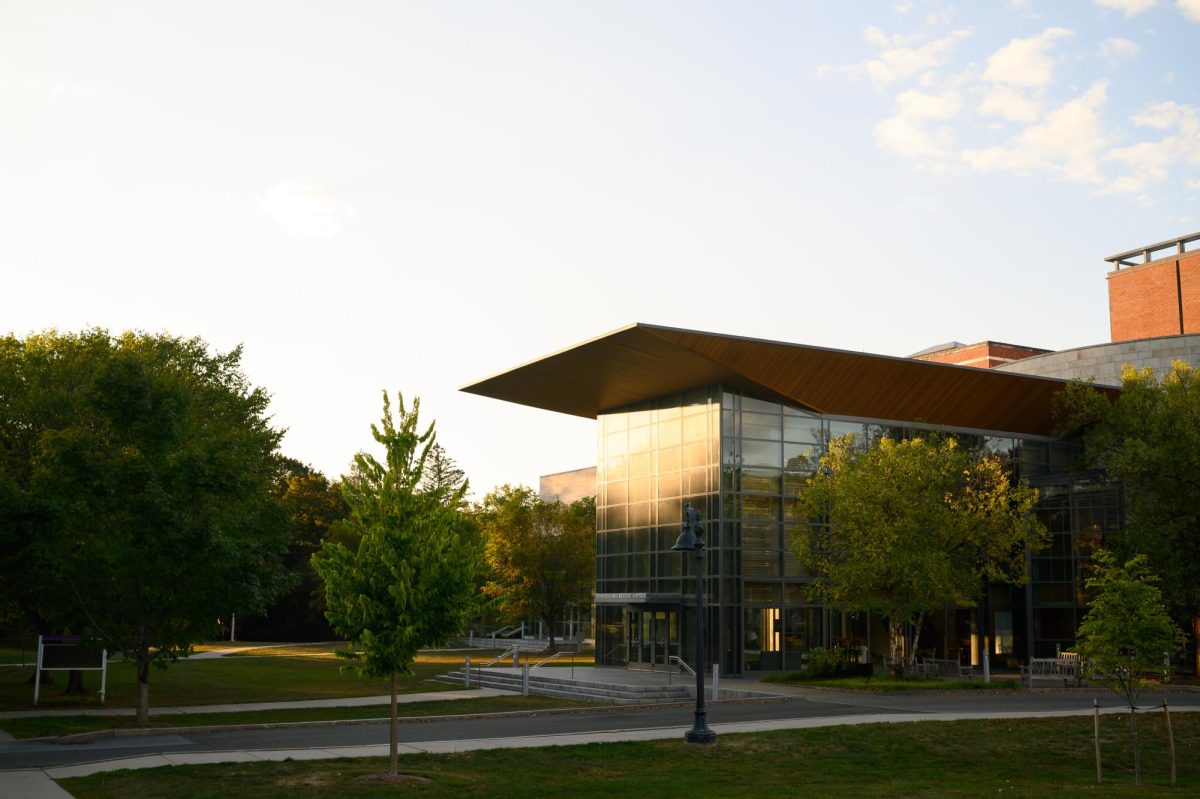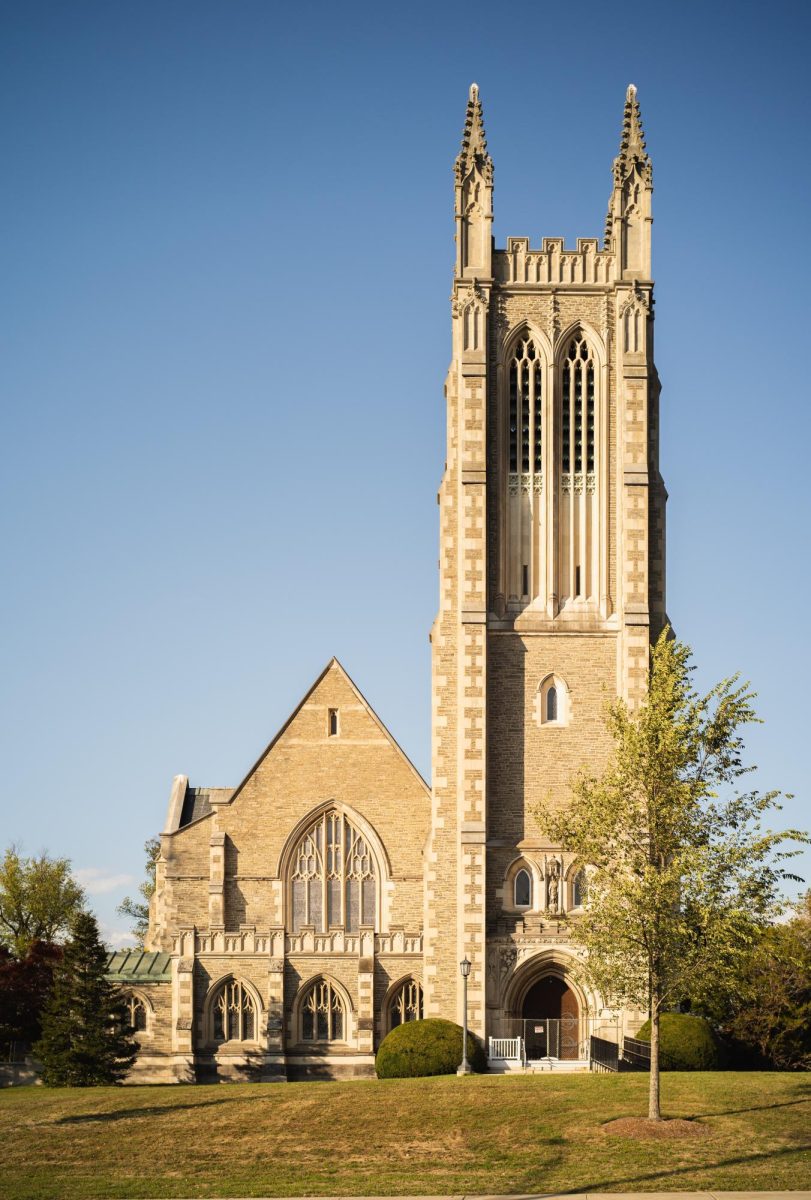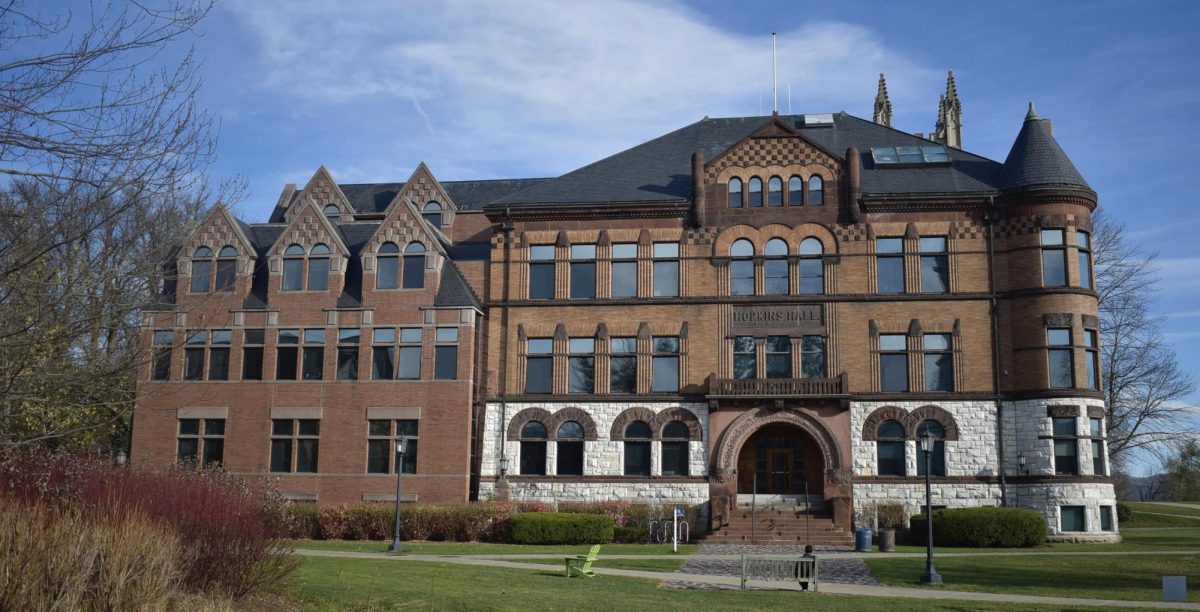Next year, the College plans to place all Theme/Affinity/Program/Special Interest (TAPSI) communities in one building.
For the 2024-2025 academic year, Mark Hopkins has been proposed as the designated location for all TAPSI housing, though some communities may expand into other buildings in Greylock Quad. The Office for Residential Life and Housing (RLH) staff announced the change at this year’s first Residential Life Advisory Committee (RLAC) meeting on Sept. 14.
RLH staff said that this decision seeks to maintain equity among TAPSI communities. This year, the seven TAPSI houses are located in distinct locations on campus. Some occupy an entire building, while others take up a singular floor.
At the RLAC meeting, Director of RLH Patricia Leahey-Hayes, Assistant Director of Housing Operations Heather McCarthy, and Senior Area Coordinator Zach Cramer explained that two other major changes would accompany the relocation of TAPSI houses: The application process to become a TAPSI community will now occur earlier in the fall semester, and the RLH will provide students with increased support throughout the application process.
A day before the meeting, Leahey-Hays, McCarthy, and Cramer also distributed a four-page pamphlet summarizing feedback collected on TAPSI in the last year and the three proposed changes to members of the committee.
In interviews with the Record, TAPSI student leaders, like Grace Rivera ’26, Community Coordinator (CC) of La Casa, voiced concerns that a move to Greylock will negatively impact TAPSI houses, particularly affinity communities.
“How could you think putting all the minorities in one corner of campus was a good idea?” she said.
According to Leahey-Hays, the designation of a pre-set housing option was necessitated by an unprecedented increase in the number of TAPSI houses from the program’s first year in 2022-2023, which has strained RLH’s ability to manage and support them adequately.
“This fall, we were given the directive to have as many communities as we received valid applications for,” she said in an interview with the Record. “Once we had the applications and the approvals, we rapidly realized that our capacity to adequately support the increase in number of students that we needed to support was disproportional.”
Cramer, who holds regular meetings with TAPSI CCs, told the Record that he believes the changes will help ease communication backlogs that have frustrated TAPSI leaders in the past.
“After applications are approved, we have historically gone through a housing process where we take the needs assessment provided by students, and we do our best to fit that into the campus jigsaw puzzle,” he said. “That has become more logistically difficult. This model removes the figuring out the locational puzzle.”
Prior to the announcement at the Sept. 14 RLAC meeting, RLH staff held meetings with several campus partners to seek input on the proposed changes.
In June, RLH reviewed the changes with the Davis Center (DC), the Zilkha Center, Office of Institutional Diversity, Equity, and Inclusion (OIDEI), as well as two students — Jiwoo Han ’25, CC of the International House last year, and Arlett Cabrera ’26, CC of La Casa this year — both of whom were on campus over the summer. Cramer told the Record that RLH “heavily considered” the students’ feedback.
Cabrera said that, had the summer meeting featured more students associated with the TAPSI program, the changes “wouldn’t have been such a big explosion.”
“I shared my disagreement and said that I was very against the idea [to move TAPSI to Mark Hopkins],” Cabrera said. “But they had their research and data about why Greylock is the only option. It just felt like they came [into] it already knowing that this is the only option.”
Amirah Parker ’26, CC of Eban House, who was also present on campus during the summer, told the Record that she had not received an invitation to this summer meeting.
“I can tell you that I was on campus when [the meeting] was happening, and I did not get an invite at all,” she said.
“I had so many meetings with Housing this summer, and they literally never brought it up at all.”
RLH also met with Assistant Vice President of Campus Engagement and Co-Director of the DC Bilal Ansari in late August, at which time he expressed concerns about the implications of moving TAPSI into Greylock. Ansari serves on the TAPSI Review Committee and was part of the 2019 campus working group that led to the formalization of the TAPSI program at the College. According to Ansari, TAPSI was initially conceived of and requested by Minority Coalition (MinCo) students.
“Affinity houses began as students voicing their needs — it became something else through the Strategic Planning, and then TAPSI was merged with it,” Ansari said. “And then affinity housing was subjected to the rules of other [types of housing], when it should have been standalone.”
According to Ansari, it is vital to incorporate student input in any significant decision regarding the structure and operation of TAPSI at the College. “This feels like a ghettoization of affinity spaces,” Ansari told the Record. “It’s top-down, and it’s not student-informed.”
Vice President for OIDEI Leticia S. E. Haynes ’99 told the Record that while OIDEI is not tasked with making determinations about housing, her office frequently “collaborates with other offices on campus on issues of importance to the [student] community” — such as the new changes to the TAPSI program. Certain members of OIDEI, like Ansari, have already met with RLH, but Haynes said she “looks forward to partnering with the Dean of the College and her team to move this forward in a manner that hopefully allows for students to have their voices heard.”
Several TAPSI CCs were not present at the RLAC meeting where RLH first announced the changes due to scheduling conflicts and heard about the changes later from their peers. Since then, TAPSI CCs and residents have responded with strong criticism and have demanded RLH not move forward with the relocation to Mark Hopkins.
Parker, alongside Eban residents Jules Gaskin-West ’24 and Jeffrey Zigbuo ’26, met with Leahey-Hays, Cramer, and McCarthy directly after the Sept. 14 meeting to voice their discontent with the relocation to Mark Hopkins and its rationale.
“[Housing] pretty much just went over the logistics of how they came to this [decision],” Parker said. “I wanted to know why we weren’t included in this process if this process affected us.”
To many concerned student leaders, it remains unclear whether the decision to place TAPSI communities in Mark Hopkins is final or still up for discussion.
“We want to be as transparent as possible with applicants about what they should expect from the TAPSI process,” Cramer told the Record. “Location is one of those elements that’s been identified as pretty central to the TAPSI process, but virtually every other component of what makes up TAPSI in the coming year is absolutely up for discussion and feedback.”
The move to Mark Hopkins has led many CCs to reconsider their plans to remain within the TAPSI program next year.
“I would just be so discouraged to apply, because what’s the point?” Cabrera said. “It’s framed as an inconvenience for [Housing]. It’s not, ‘We’re here to support you and celebrate your Latinx heritage and your identity.’ It’s just saying, ‘Oh, here’s a space where you need to live with people that share your identity.’ I would be wary to even tell other people to apply for the house.”
Other CCs said they will not submit TAPSI applications next year if CCs for affinity TAPSI houses elect not to reapply to the program. Dylan Safai ’26, a CC of the Global Diplomacy and International Finance House, said his house plans to stand in solidarity with Eban House and not register for TAPSI if Eban elects not to do so.
Students also voiced confusion about the source of the feedback in the pamphlet RLH distributed at the RLAC meeting. Cramer, who was tasked with collecting this feedback, said that the ideas presented came from a spring 2023 survey sent to CCs and TAPSI faculty and staff advisors as well as from conversations with students and various campus partners that occurred throughout the year.
“The most disturbing thing in the feedback under equity [on the pamphlet] was where it said TAPSI is ‘taking space from other students … in an already stressful housing process.’” Zigbuo said. “The way I interpreted that is [that] Housing does not want to take accountability for creating a stressful housing process.”
Cramer addressed student concerns regarding the language used in the pamphlet in an interview with the Record last week. “That was a paraphrased quote that I got from a housing coordinator in an information session in the spring,” he said. “And I’m disappointed in the way that it was phrased. I should have phrased it differently.”
This year, there are seven TAPSI groups that house 173 students in total. 108 of these students reside across five affinity houses, the largest of which is Eban House. Last spring, students pushed back against the TAPSI Review Committee’s decision to assign Eban House to the first floor in Morgan Hall instead of the entirety of Wood House. Many students, including Parker, said that they see these new changes as a repeat of last year.
“For [Housing] to know that happened literally last semester, and still go forth with this, and tell us that they had our best interests in mind — it just does not make any sense whatsoever,” Parker said.
For Dean of the College Gretchen Long, the changes are a necessary part of TAPSI’s evolving presence at the College. Since TAPSI is a new program, Long said, reevaluating its location on campus is to be expected.
The pamphlet distributed at the RLAC meeting ends with a reflection on whether the College “should be creating a separate process and program altogether to establish consistent spaces for [affinity] communities on campus” — but not for the upcoming year.
Some students are calling for the College to separate affinity housing from theme and special interest housing. “We just don’t want anything to do with the T, P, S, or I of TAPSI,” Parker said. “It’s not sustainable, and it does not fully accommodate our community’s needs, and we’d like a different system. All we’re asking for is permanence.”
“We need to separate affinity from interest and TAPSI housing at large,” Gaskin-West said.
Sam Samuel ’26, co-president of the Black Student Union, said the planned move from Wood House to Mark Hopkins has left Black students on campus feeling one thing: “We are tired.”
Students across the seven TAPSI houses are still slowly learning about these developments, with Rivera and Cabrera being “in the works of getting all the CCs together.”
“We really want to form a united front,” Rivera said.



